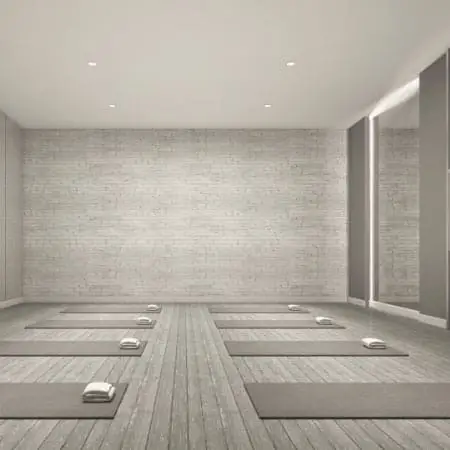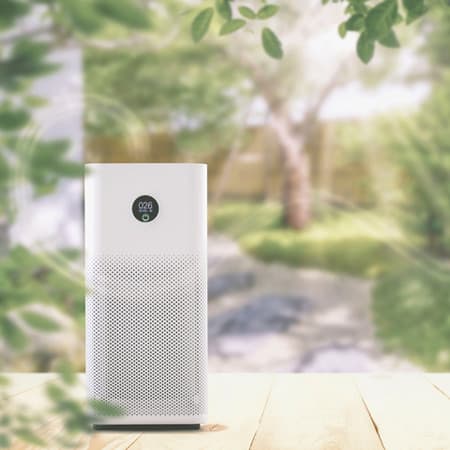Awareness of breath is at the heart of yoga. Deep, clear breathing is an essential part of yoga practice, and a part of this is practicing in an ideal environment with clear, breathable air. Some spaces are more suitable for yoga than others.
You can do yoga in a closed room, but a space with fresh or well-ventilated air is ideal. This can be anywhere from a ventilated studio, a room with open windows, or a space outdoors. A closed room with stuffy air not being circulated will not allow you to experience all of the benefits of yoga.
In this article, we will discuss the best environments to practice yoga. If you practice indoors, recommendations will be made to help you adapt your space to make it better ventilated. Information will be given about appliances you can use and ways to monitor air quality.
Ways to Do Yoga in a Closed Room
To experience all of the life-giving benefits yoga provides, it is essential to set up a comfortable and inspiring place for your practice. Every yogi will search for unique characteristics when it comes to the space they are practicing in. But one thing should remain the same between all studios and practice spaces: fresh or well-ventilated air.

In yoga, breath is of the utmost importance. Breath leads your practice, allows you to better settle into poses, and sustains your energy. Especially in class settings, with the deep and heavy yoga breathing, or Pranayama, that happens during class, a lot of warm air is exhaled into the room. To keep the area comfortable and the air pure in an indoor environment, finding a way to ventilate and circulate air is essential.
If you are doing an indoor yoga practice, you may find yourself needing to practice in a closed room. Perhaps this is because you are practicing at a gym with a specific space dedicated to a yoga class, and there is activity outside the room that can distract from your practice. Or if you are doing a home practice and living in an apartment or other communal living space. You can practice yoga in a closed room, but you will want to take steps to be sure the air is fresh.
Below, we find a few different ways to ventilate air, creating a healthy space for yoga.
Open Windows
Perhaps the preferred way to ventilate air for your yoga practice, either at home or a studio, is to open the windows. The fresh air will be especially rejuvenating during your practice. According to the U.S. Environmental Protection Agency, indoor air can have levels of pollutants five times higher than outdoor air. So the more outdoor air you can get into your studio while circulating the indoor air out, the better.
While circulating fresh air in the studio, you will be inhaling better-quality oxygen, which will break down pollutants accumulating in your airway. Also, with cleaner oxygen, your body will naturally take deeper breaths leading to higher-performance.
Opening windows may not be an option for you, especially if practicing in a studio space. Sometimes studios don’t have windows to help create a darker space, which is also an ideal environment for yoga. Also, depending on the building the studio is in, even if it has windows, they may not be able to be opened. If opening windows is not an option for you, a few solutions are still useful, although not as natural.
Air Purifier

Using an air purifier in your yoga space is also an excellent way to clear pollutants out of the air. Air purifiers are appliances that can clear smoke, dander, dust, and odors out of the air. The appliance consists of a fan and multiple filters. As air moves through the filter, the pollutants and particles are filtered out, and clear air is pushed back out of the appliance by the fan.
An air purifier is a great way to neutralize the air in your studio or practice space. Although it won’t completely free the air of all pollutants, it will be one of the best options to clean indoor air. This is likely the appliance that will get you the best quality air out of all that will be listed.
Dehumidifier
Dehumidifiers work somewhat similarly to air purifiers, but instead of pulling in all of the air particles, a dehumidifier pulls in the moist, humid air. Then cooler, drier air is released back into the atmosphere keeping the room at ideal humidity levels between 30% and 50%.
A dehumidifier is a good option for a yoga studio as body heat and sweat is produced; it would not be uncommon for the air to become damp. The damp, dense air makes it a lot more challenging to engage in Pranayama as the air feels heavier to breathe. Pairing a dehumidifier with an air purifier would be an even more ideal solution if practicing in a closed room.
Exhaust Fan
Another appliance that could help clear the air is an exhaust fan. Exhaust fans are also used to remove humid air from the room. The difference between the exhaust fan and the dehumidifier is that the exhaust fan will not be circulating any air or releasing any air back into space.
Exhaust fans will remove the moist air and also will lower the heat in the room. If you are doing home practice, perhaps choose a practice space in a room with an exhaust fan or near a room with an exhaust fan and keep the fan running while you practice, and the fan will at least move the air around.
These are all some different options to consider if you need to practice yoga in a closed space. In addition to the tips listed above, also consider simple things like keeping the door of the room or studio open or using a box or floor fan.
Other Considerations
As you take steps to clear the air in your yoga practice space or studio, you may find it helpful to monitor air quality. There are many household air quality monitors you can invest in to ensure your efforts are working and adjust them as necessary.
In the world we live in, pollutants and toxins in the air always surround us. Combatting this type of pollution is a challenge. But the tools yoga gives us, like learning effective deep breathing techniques, will help our body more naturally combat this. Focusing on our breath allows us to support our body and organs and also is a natural way to eliminate waste products from our body.
A fantastic option sometimes overlooked is taking your yoga practice outside. Unless you live in an urban area with heavy outdoor pollution, this will allow you to breathe the purest air available.
Yoga and the experience of being outdoors are both endorphin producing activities, naturally boosting your mood. The two are a great combination. If you cannot find an ideal indoor space to practice that will allow you to take the proper steps to ventilate air, remember that the great outdoors is always accessible to you and enhance your practice.
Final Thoughts
If you are doing indoor yoga practice, and find yourself in a closed room, take steps to fill the space with fresh air. Do so by opening windows, using an air purifier or dehumidifier, and monitor the air quality as you do so. Yoga can be done anywhere. Indoors or outdoors, as long as you have some fresh or ventilated air, you are sure to experience many benefits.








